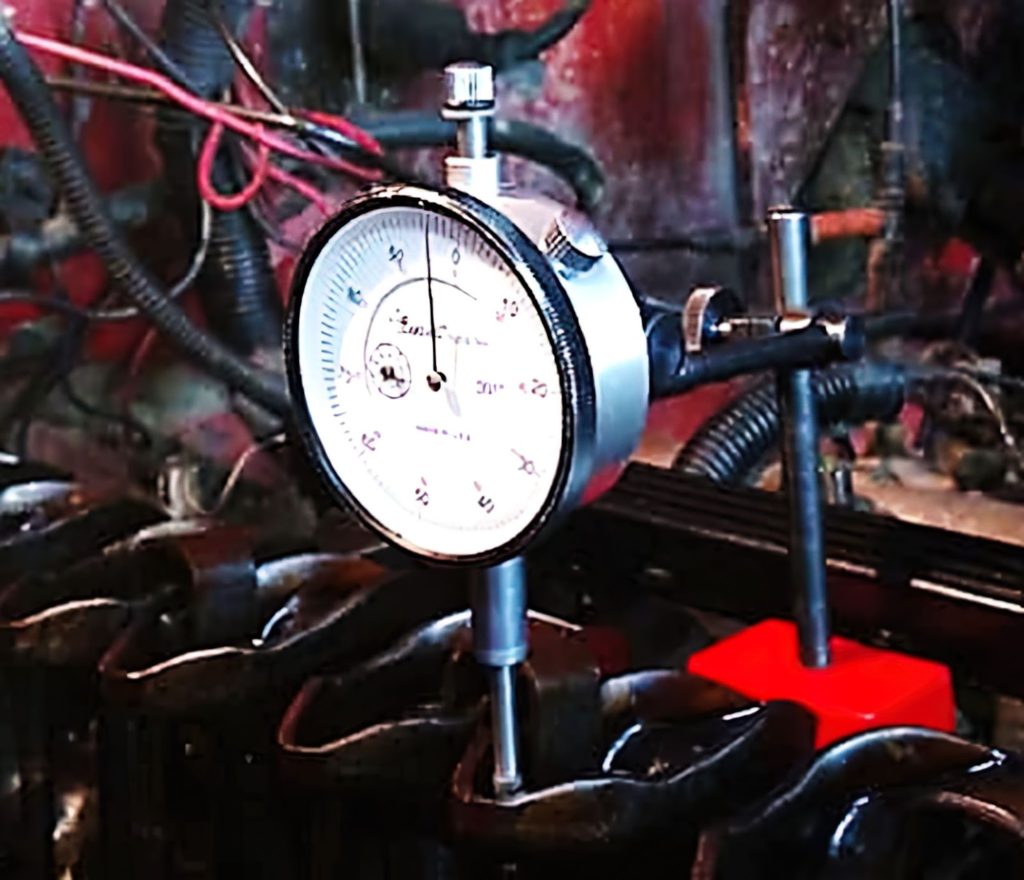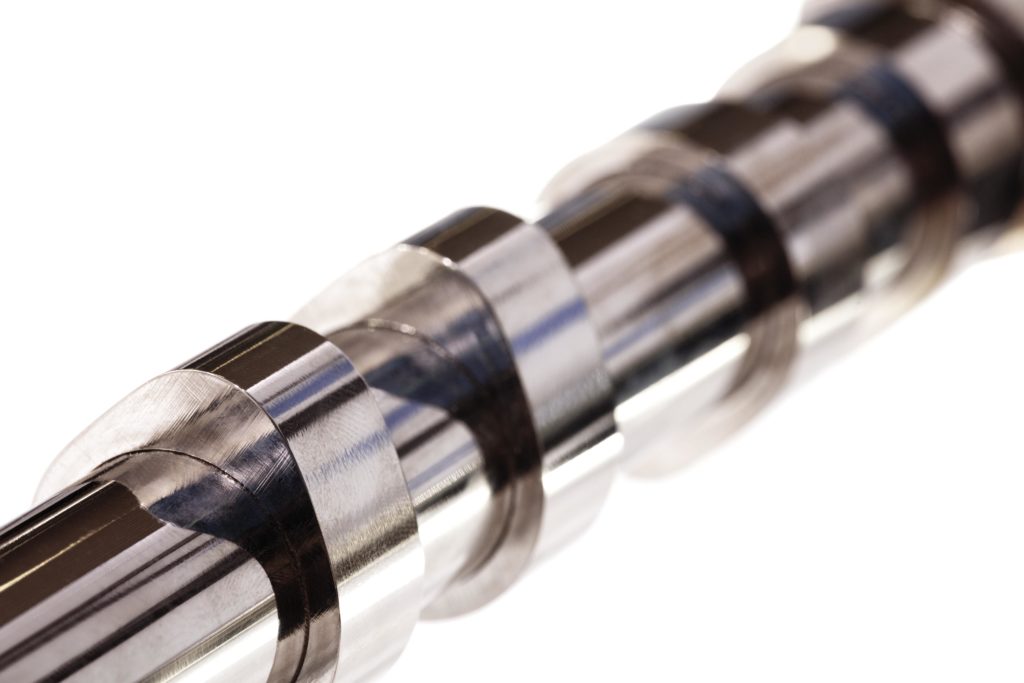When the camshaft fails, it’s generally due to poor maintenance and lack of lubrication causing lobe wear. But there are also mechanical reasons why camshafts fail: roller rockers can seize or lifters can damage camshaft lobes. The camshaft can spin out of time due to failed belts, gears, sheared pins or keys, or stretched/failed chains and chain hardware, as well as problems with cam phasers used for variable cam timing.
To help you determine when this part might be bad, we’ve listed down the common signs of a bad camshaft.
6 Symptoms of a Bad Camshaft
When ignored, a busted camshaft may also cause extensive damage to some parts of the engine like the crankshaft and cylinder head.
To help you prevent all of this, here are common camshaft wear symptoms to look out for:
- Active or flashing check engine light
- Loss of power
- Steady popping/backfire in the intake manifold or exhaust (extreme wear).
- Loud ticking or tapping sounds
- Metal debris in the engine oil
- Cylinder misfire
- Increased emissions as a result of misfiring
- Visible signs of damage
Active Check Engine Light
The check engine light comes on whenever your vehicle’s computer detects a potential problem that may lead to an increase in emissions. This warning light can be triggered by multiple things, so you’ll need to connect your vehicle to an OBD scan tool to check what codes are stored. This serves as the first step in any engine performance diagnostic strategy. Note, however, that a flashing check engine light warns of a serious misfire.
Loud Ticking or Tapping Sounds
If you’re wondering what a bad camshaft sounds like, it usually makes loud ticking or tapping noises. As it starts to fail, you may notice odd sounds coming from your vehicle’s valvetrain.
Ticking noises are often linked to worn cam lobes. However, identifying the source of these sounds can be tricky as they are often intermittent.

Metal Debris in the Engine Oil
A worn camshaft lobe can result in metal debris circulating through the engine. Although you might not see the metal on the dipstick, there may be debris or metallic swirls in the oil after you drain it.
Cylinder Misfire
A vehicle with a damaged camshaft may suffer from reduced engine performance due to cylinder misfire. Your vehicle may hesitate and lose power, jerk or shake aggressively, consume more fuel than usual, and produce more emissions.
Increased Emissions as a Result of Misfiring
A worn camshaft can lead to an engine misfire, which in turn, causes an increase in tailpipe emissions.
Visible Signs of Corrosion/Damage
If your car has an OHC (overhead camshaft engine), lifting the cam cover will show you if your camshaft has any visible signs of damage. Look for issues such as worn lobes or scored journals that could indicate an internal failure that has damaged the camshaft.
What Is a Camshaft?
A camshaft is a cast iron or hardened steel shaft specifically timed to half the rotation speed of the crankshaft, which drives the camshaft via a chain, a belt, or directly meshed gears.
The camshaft is typically ground from a single piece of cast steel so that along its length, it has carefully indexed egg-shaped lobes, with one lobe for each valve. There are lobes for the intake valves and for the exhaust valves. The camshaft opens each valve against spring pressure by way of rocker arms or cam followers depending on engine design.

The two primary factors used when grinding the lobes (other than indexing) are lift (how much the valve is opened) and duration (how long the valve remains open and how fast it opens and closes).
The camshaft rotates, operating the valves in time with piston travel, which makes the engine a “breathing” machine of sorts. The firing of the spark plugs triggers combustion, that heats the inert nitrogen, which is mostly what’s in atmosphere and in the cylinder. The expanding nitrogen drives the piston, which provides turning force by way of the crankshaft through the flywheel to the transmission. This engine “breathing” and combustion process only works because of valve timing, which totally depends on camshaft rotation. Depending on your vehicle’s engine type, you may have one, two, or four camshafts.
What Happens When a Camshaft Breaks?
When a camshaft breaks, the components around it are also at risk of damage. The parts most vulnerable to damage are those located inside of your vehicle’s engine. These include the other valvetrain components, the crankshaft, cylinder block, cylinder head, pistons, and connecting rods.

A damaged camshaft can snap in two because of a crack or fracture caused by rough handling during shipping or some time before installation. If the camshaft is defective, it may appear bent. The cam can also chip or break off entirely after being hit by any of the engine’s rotating parts that may have come loose.
How to Fix a Bad Camshaft
If you’re not a professional, it would be best to leave camshaft repairs to a mechanic. This is due to the extent of diagnosis needed before deciding on the best way to fix this problem. What you might have thought to be a completely damaged camshaft may be something else entirely.
Depending on the extent of wear, there are two options for fixing your damaged camshaft:
- Replace your camshaft with a new one
- Have your old camshaft machined
In terms of costs, buying a new camshaft is the most expensive option. A remanufactured camshaft costs less, while machining your camshaft (if it’s still usable) should be even cheaper since you’re supplying your camshaft to use as the core.
A camshaft replacement can go for anywhere between $50 and $300 plus labor costs. The price varies depending on the camshaft’s brand and condition. Depending on the severity of the damage, other related repairs may also be needed.
Where to Get a New Camshaft for Your Vehicle
First things first: if you have a bad camshaft, it’s best to stop driving your vehicle. Engine issues are some of the most expensive to fix, so you want to avoid any further costly damage. Thankfully, getting a replacement camshaft that fits your car is easy with CarParts.com.
You don’t even have to leave your home to get a new camshaft. Simply use your mobile phone to visit CarParts.com, and use our vehicle selector to select your vehicle’s details, including its exact year, make, model, and engine. We only source our camshafts from the most trusted manufacturers in the industry, so you know you’re installing a replacement part that can last the life of your car. And since our warehouses are strategically located all over the US, you can receive your order in just a few days.
Don’t wait until your camshaft completely breaks before getting it replaced. Check out our wide selection of quality camshafts now at CarParts.com.
Any information provided on this Website is for informational purposes only and is not intended to replace consultation with a professional mechanic. The accuracy and timeliness of the information may change from the time of publication.




























